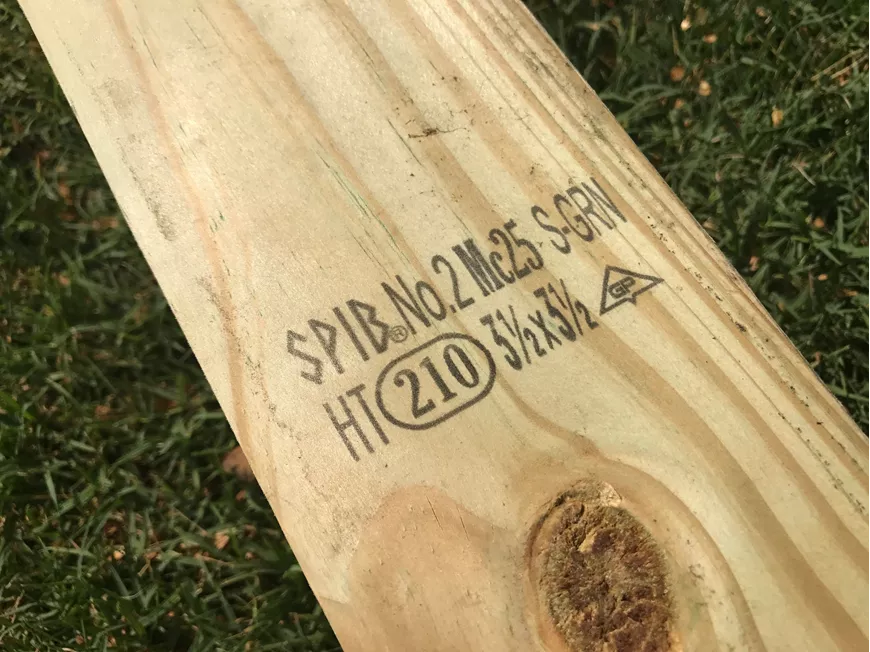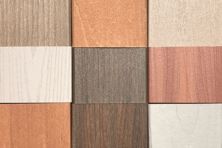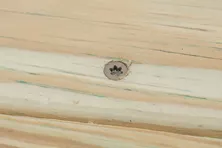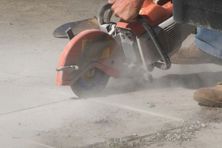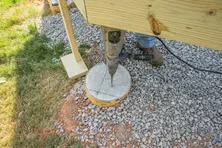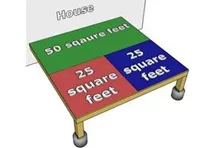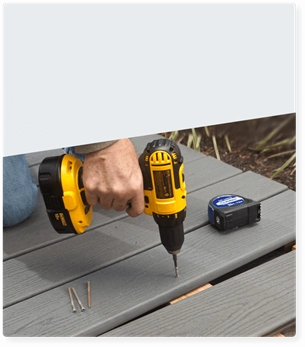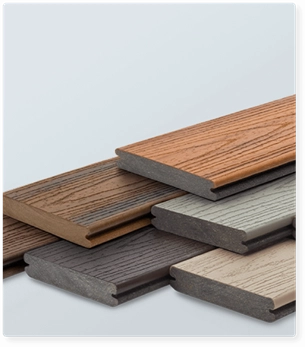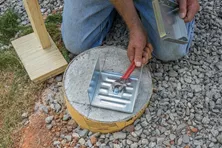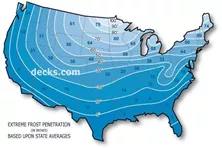How to Read Lumber Grade Stamping
Any lumber you purchase should have a grade stamp or end tag. These markers provide a lot of important information related to the characteristics of the wood. Each piece of lumber will be visually or mechanically inspected according to the number of defects that are present and graded accordingly to meet consistent visual and structural standards.
The stamp will include a seal that identifies which certified agencies' rules were used in grading the lumber as well as identifying the mill where the lumber was processed. The species of wood will be identified in an abbreviated form and the grade designation will be placed in the center of the stamp. There are many industry-specific grades for different wood products. The most common are FAS, Select, #1 Common and #2 Common, from best to worst. The surface texture of each face will be listed as either S for smooth or RS for rough sawn. The moisture content will be referenced by the abbreviations Grn for green (containing more than 19% water weight), Dry (containing less than 19% water weight), or KDAT (kiln-dried after treatment).
Using grade stamp information will be helpful when selecting your materials, but the markings themselves act as a visual defect on the surface of a deck. You may be able to turn the board over to hide the stamp. Otherwise, the only way to remove grade stamps from lumber is to sand the board.
Capped Composite Decking
What is capped composite decking? It's a great option if you like the look of wood but not the maintenance. Learn about capped composite at Decks.com.
Composite Decking Prices
Composite decking ranges in price from $2 to $6 per linear foot. Compare brands and costs with our composite decking pricing chart at Decks.com.
Types of Wood Decking Materials
There are many options for choosing the best wood for your deck, like pressure treated pine, cedar, redwood or mahogany. Compare types of wood at Decks.com.
Cutting a Concrete Pad
Learn how to use a concrete saw to cut a hole in a patio slab to install a deck footing.
Installing footings on a sloped yard
Our inspector explains how to install concrete deck footings on uneven ground.
Footing Size
Learn how large to make your deck footings. Use our table for maximum allowable loads to determine the proper size for your soil type.
More Helpful Resources
Explore Articles by Topic

Footings
Information related to installing frost footings for decks

Framing
Learn structural framing methods

Decking
Learn about wood and composite decking materials

Stairs
An in-depth look at the complex issue of how to build stairs

Railings
How to install guardrails and handrails to meet IRC code

Features
An overview on water drainage, benches, planters and lights

Design
The basics of deck design

Planning
Learn about permits and working with contractors

Porches & Patios
Build a covered deck to enjoy all seasons

Ledger
Proper attachment techniques

Care
Maintain your deck to maintain your investment

Materials
An overview on water drainage, benches, planters and lights
Eco Friendly Composite & Wood Decking Options
Looking for the most environmentally friendly way to add a gorgeous deck to your home? Learn how composite decking is made from recycled materials at Decks.com.
Aztec
Aztec Plastic Lumber is manufactured by Amazing Recycled Products in Denver, CO.
How many footings do I need?
Learn how to determine the number of footings and support posts you need for your deck when designing your deck frame.
How to Buy Concrete: Hiring a Ready-Mix Truck
Hiring a truck to deliver ready-mixed concrete for your project may make better sense than mixing it yourself. Learn how to order concrete for your deck at Decks.com.
Deck Footing Depth
Find out how deep you need to dig your footings in your area. Look at our U.S. map of extreme frost penetration.
Explore Articles by Topic

Footings
Information related to installing frost footings for decks

Framing
Learn structural framing methods

Decking
Learn about wood and composite decking materials

Stairs
An in-depth look at the complex issue of how to build stairs

Railings
How to install guardrails and handrails to meet IRC code

Features
An overview on water drainage, benches, planters and lights

Design
The basics of deck design

Planning
Learn about permits and working with contractors

Porches & Patios
Build a covered deck to enjoy all seasons

Ledger
Proper attachment techniques

Care
Maintain your deck to maintain your investment

Materials
An overview on water drainage, benches, planters and lights




